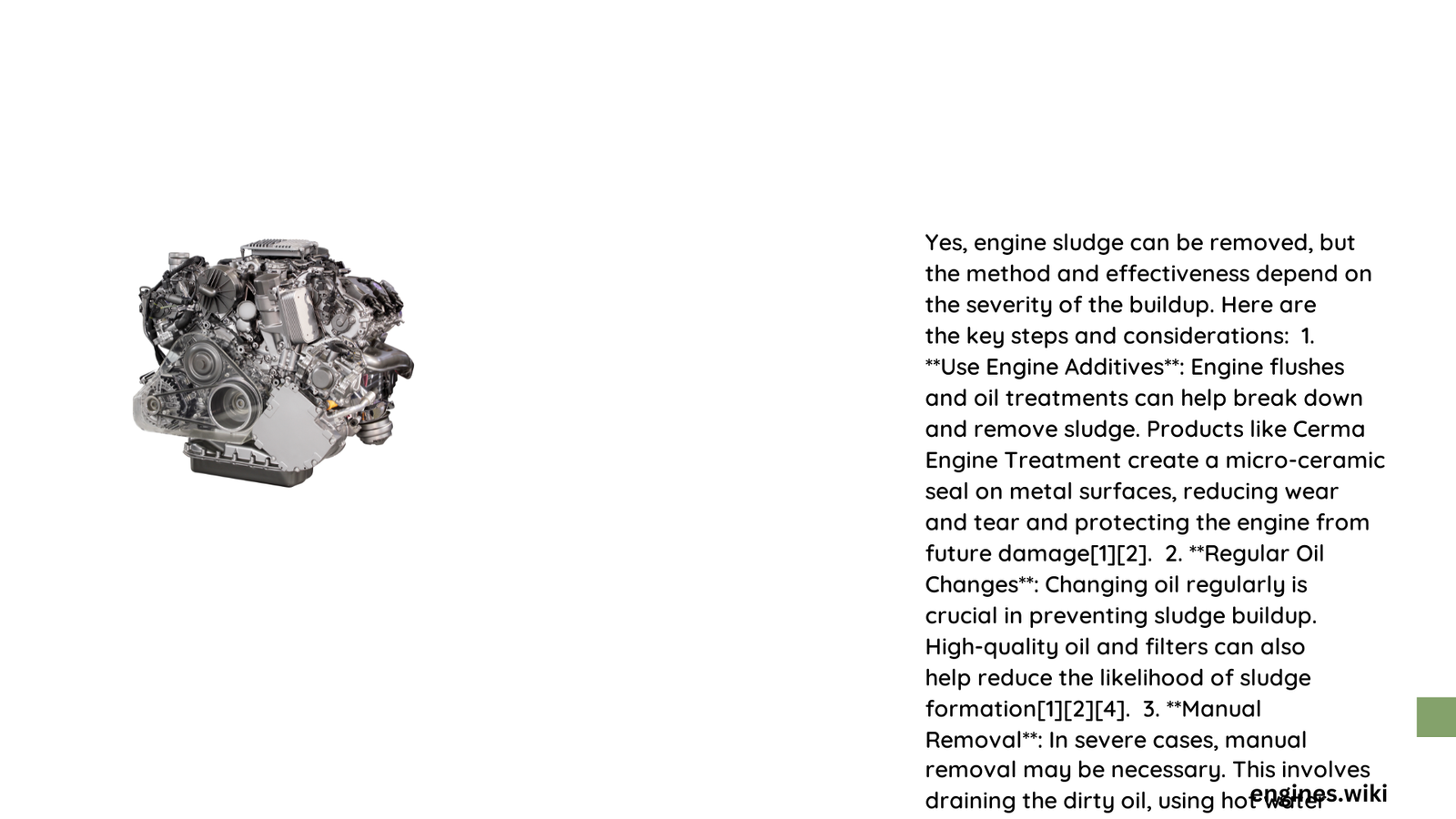Engine sludge is a critical problem that can significantly compromise your vehicle’s performance and longevity. This comprehensive guide explores multiple scientifically-backed techniques to effectively remove and prevent engine sludge, offering vehicle owners practical solutions to protect their automotive investments and maintain optimal engine functionality.
What Causes Engine Sludge Buildup?
Engine sludge develops through multiple mechanisms:
- Oxidation of Engine Oil: Prolonged exposure to high temperatures
- Contamination from Combustion Byproducts: Carbon deposits and unburned fuel
- Inadequate Maintenance: Infrequent oil changes
- Low-Quality Motor Oil: Insufficient detergent additives
Can Chemical Methods Remove Engine Sludge?

Chemical Flushing Techniques
| Method | Effectiveness | Cost | Duration |
|---|---|---|---|
| Detergent-Based Flush | 85-90% | Moderate | 2-4 Hours |
| Solvent-Based Cleaning | 75-85% | High | 1-3 Hours |
| Specialized Oil Additives | 60-75% | Low | Ongoing |
Chemical flushing involves introducing specialized cleaning agents that break down and dissolve sludge deposits. These solutions contain:
- Powerful Detergents: Emulsify and suspend contaminants
- Solvent Compounds: Dissolve hardened oil residues
- Dispersant Additives: Prevent re-precipitation of particles
What Mechanical Approaches Work for Sludge Removal?
Advanced Mechanical Cleaning Methods
- High-Velocity Oil Flushing
- Uses pressurized, heated oil
- Dislodges stubborn deposits
-
Recommended for severe sludge accumulation
-
Offline Filtration Systems
- Utilize advanced filter media
- Remove microscopic contaminants
-
Continuous engine protection
-
Professional Engine Decarbonization
- Specialized mechanical cleaning
- Requires professional intervention
- Most comprehensive solution
How to Prevent Future Sludge Formation?
Proactive Maintenance Strategies
- Regular Oil Changes: Every 3,000-5,000 miles
- Use High-Quality Motor Oil: With robust detergent packages
- Monitor Oil Condition: Annual professional oil analysis
- Avoid Short-Distance Driving: Prevents moisture accumulation
- Use Engine Flush Products: Periodically clean internal components
Warning Signs of Excessive Engine Sludge
Diagnostic Indicators
- Reduced Engine Performance
- Increased Oil Consumption
- Unusual Engine Noises
- Check Engine Light Activation
- Decreased Fuel Efficiency
Expert Recommendations for Sludge Removal
Professional vs. DIY Approaches
| Approach | Pros | Cons |
|---|---|---|
| DIY Methods | Low Cost | Limited Effectiveness |
| Professional Service | Comprehensive Cleaning | Higher Expense |
Final Thoughts on Engine Sludge Elimination
Engine sludge removal requires a multi-faceted approach combining chemical treatments, mechanical cleaning, and preventative maintenance. While complete elimination is challenging, consistent care can significantly mitigate sludge-related issues.
Key Takeaways
- Chemical and mechanical methods both offer effective sludge removal
- Prevention is more cost-effective than extensive repairs
- Professional assessment provides the most reliable solution
Reference:
– SAE International Lubrication Standards
– Society of Automotive Engineers Research
– Automotive Maintenance Guidelines
